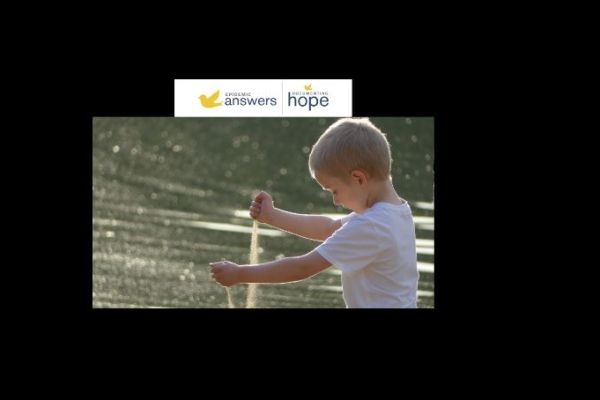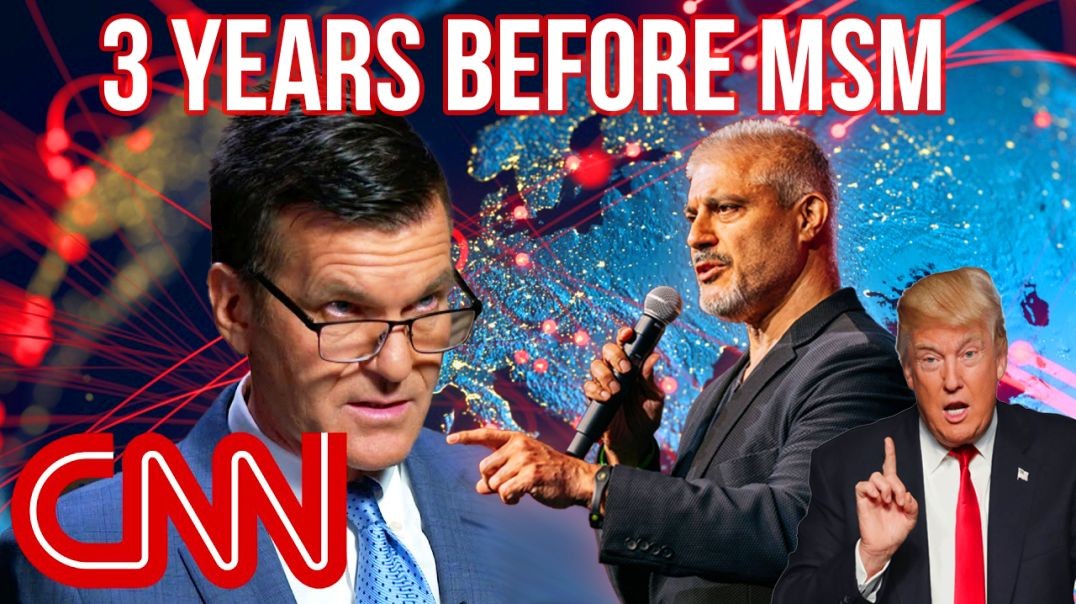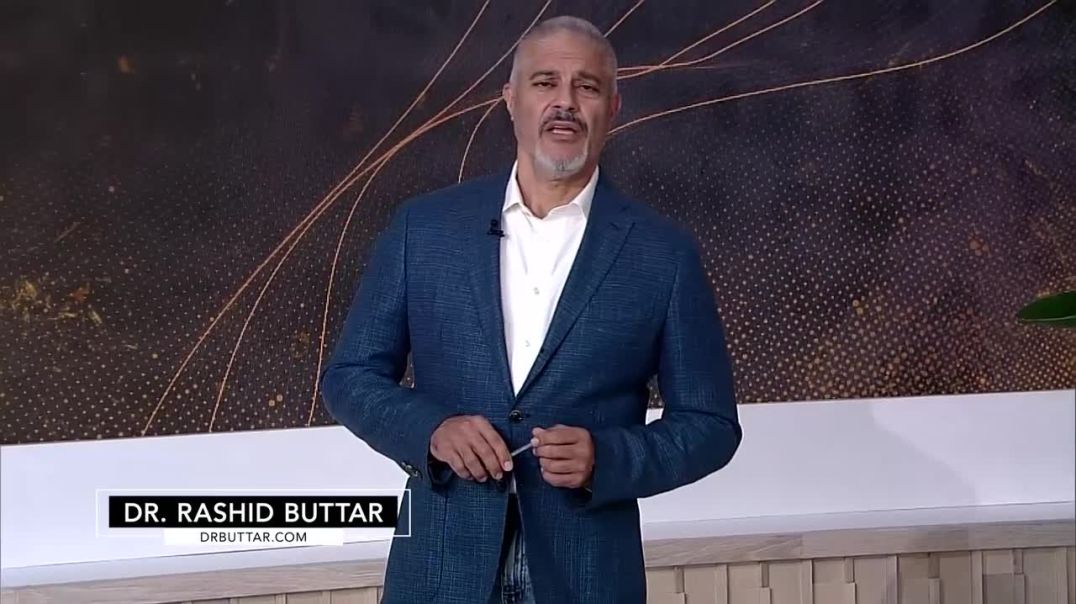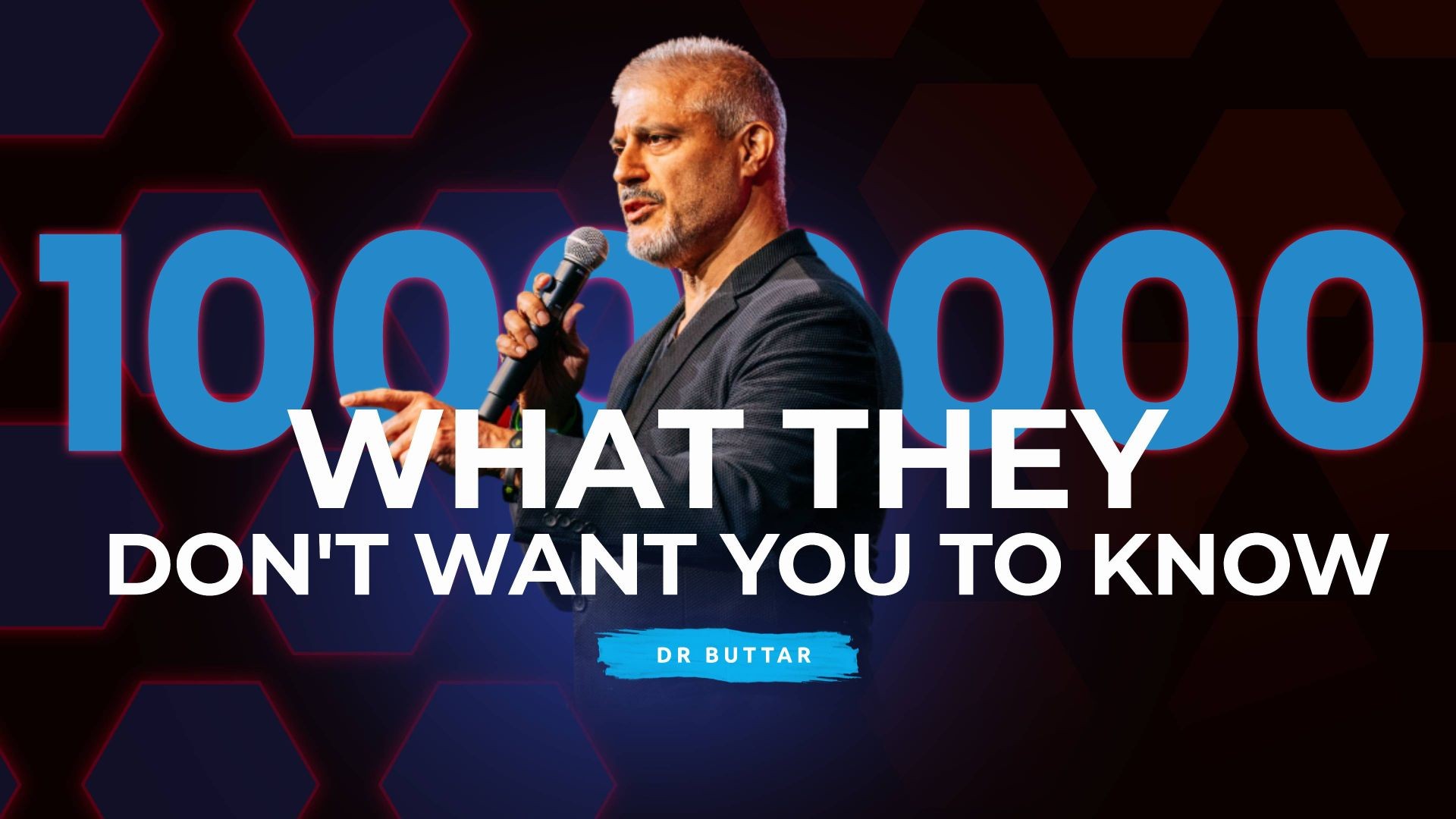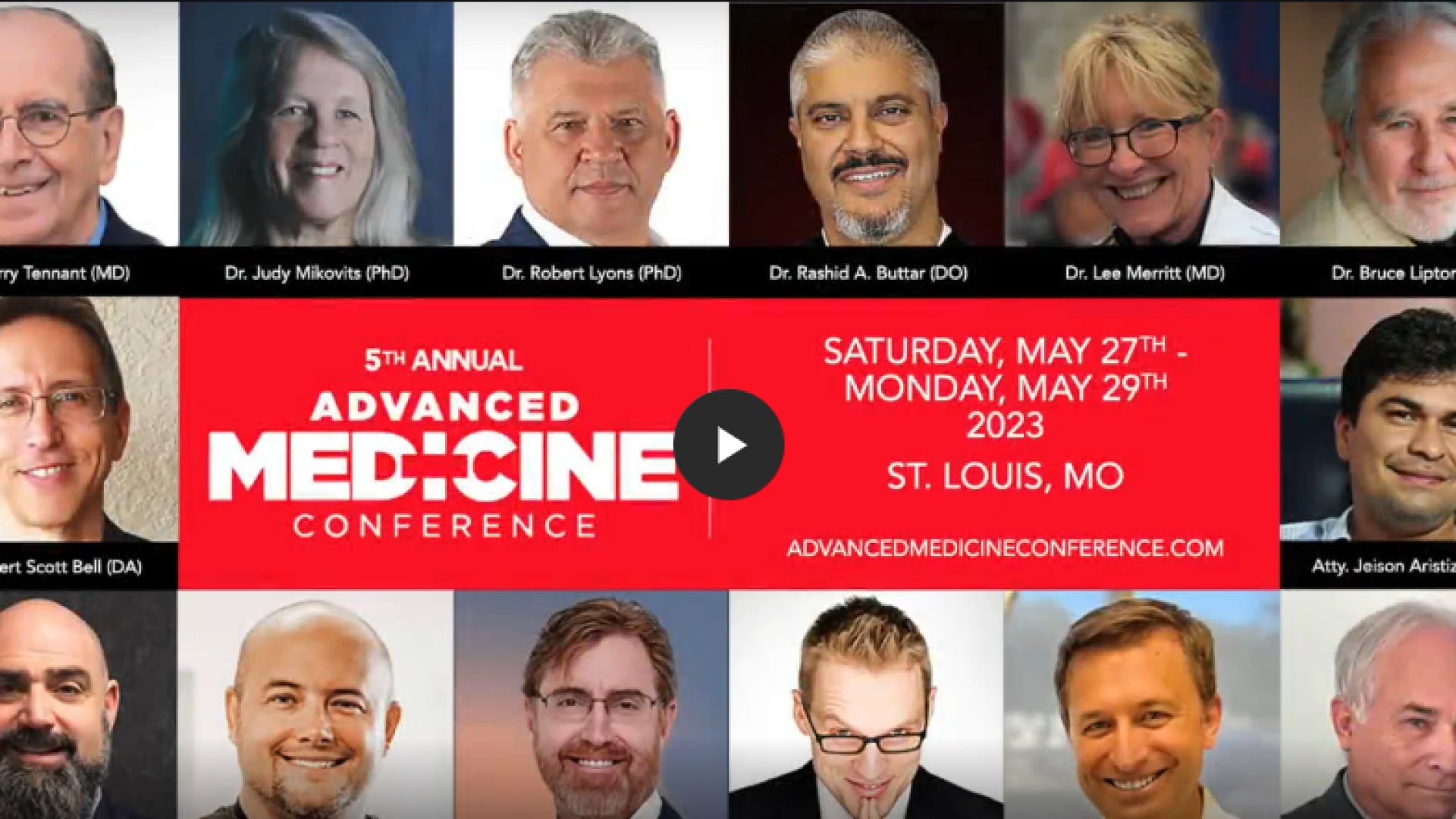The Biomedical Definition of Autism
Autism spectrum disorder is a multi-system developmental disorder caused by an accumulation of environmental stressors impacting genetically susceptible individuals during critical developmental moments.
Remember what I said about how the body always prioritizes survival over development. What happens to a baby that is born prematurely, who comes into this world already loaded with a bucket full of toxins in their tiny body (over 280 synthetic chemicals in cord blood according to EWG), whose nervous system is on overdrive with the fluorescent lights and other sights, smells and sounds of the NICU, who was exposed to antibiotics because his mother tested positive for group B strep during pregnancy, who then had a hepatitis B vaccine at one week old, who then couldn’t breastfeed due to latching issues and his mother’s painful thrush infection on her nipples (caused by her imbalanced microbiome), who then went home to a house filled with everyday American life products that are synthetic, endocrine disrupting, and toxic to human cells and slept every night on an infant bassinet mattress made of PVC and flame retardants?
That baby is supposed to channel his energy into developing vision, hearing, speech, social communication, motor development and more. But his little body is just too overloaded and prioritizes detoxification, repairing DNA damage, and dealing with the toxic microbial metabolites churning out of his altered gut microbiome. This baby doesn’t have any energy left to do the normal developmental work.
Just like a bridge that collapses after years of heavy trucks crossing it, the body collapses into autism as the multiple triggers add up. Depending upon the triggers, the timing, and the heritable differences (genetics and inherited microbiome), different systems are affected in each individual related to his/her bioindividuality.
More often than not, we don’t pick up this child’s developmental issues until they are very far down the line. Maybe the child is 3 or 4 or 5 years old. . . . when he is supposed to be speaking, walking, writing, jumping. But he isn’t. So, he gets an autism diagnosis. And we tell the parents that he was “born this way,” and “he will always be this way” and there is nothing you can do but support him with ABA to help him pick up the spoon and fork and to force him to look you in the eye.
Even. Though. He. Can’t.
What are we doing to these children?
Neuroplasticity
Thanks to discoveries around neuroplasticity, you can change the “hardwiring,” so even if your brain experienced stress, toxicity, and inflammation during critical developmental times and “wired” your brain in a particular way, there are dozens of ways to leverage neuroplasticity to overcome the challenges.
Also, while I used the word “hardwiring”, maybe we should think of the brain “thinking differently” as a fluid and adaptive response rather than a hardwiring. In other words, the brain adapted to a circumstance (inflammation, stress, chemicals, infection, cellular toxicity) and created certain neural networks as an adaptation to get around or deal with the dysfunction or dysregulation created by the environmental stressors. This adaptation doesn’t have to always be a negative experience like not knowing how to socialize in a social world. It could be a wonderful adaptation that created the ability to see or hear things that are outside the "typical" human range or perhaps to be able to process abstract concepts beyond what is typical.
Changing the hardwiring isn’t necessarily what neurodivergent people or people with autism need. They may want or need that, but at a minimum, they certainly need their medical conditions and physiological imbalances treated.
Why Are We Ignoring the Medical Issues?
So, why are we ignoring neurodivergent people’s medical issues and physiological imbalances? Why aren’t we offering treatment?
- Because it can be hard;
- Because it can be expensive and isn’t covered by insurance;
- Because by doing so we must acknowledge all the things in our culture and daily lives that are hurting our children. We must acknowledge that we (our society) are responsible for the autism epidemic. And no one wants to shoulder that shame or guilt.
Go ahead and Google: “Why do so many people have autism today?” Let me know what you get. You probably won’t get a clear answer, if you get an answer at all.
More likely than not, most articles like this one, from the captured media NBC News, will tell you—definitively—that they don’t know what causes autism, although it’s probably genetic with maybe just a touch of environmental factors. Just a smidge. A sprinkling, really. But it’s mostly genetic, and they will also tell you—definitively--what does not cause autism. Vaccines do not cause autism.
Okey dokey.
Why Is No One Asking What Causes Autism?
Why won’t anyone ask the question, what causes autism?
It isn’t because “science” doesn’t know. Science does know. There are thousands of physicians and scientists doing amazing work that have uncovered a profound, deep and rich understanding of what happens in a child’s body during critical developmental times (in utero, neonatal, and during the first few years of life) that contributes to the syndrome of symptoms that we label as autism.
The scientists know! They just aren’t allowed to talk about it in polite society because the answer is too painful for us as compassionate, caring, human beings and as a society. It hurts too much. It hurts to know that we (society, parents, pediatricians, culture) unwittingly contributed to a condition that we don’t understand and causes suffering in many.
Notice I used the word unwittingly.
We. Had. No. Idea.
We had no idea that living in the modern world (using toxic chemical products, living stressed-out crazy lives, taking synthetic pharmaceuticals that poison your cells, disrupt your hormones, wipe out your microbiome) would impact our children’s development.
We didn’t know.
And so, we bury our heads in the sand. Meanwhile, thousands of courageous parents who know what caused their child’s autism and work every day to try and help support their child the best way they know how feel abandoned by a medical system that doesn’t listen to them, dismisses them, and labels them with terms of hate speech like “anti-vaxxer” or belittling terms like “paranoid helicopter mother” or some other middle-school level deflection.
"How Can We Help You Be Your Best Self?"
I’m afraid that by emphasizing the need to celebrate neurodiversity without also simultaneously acknowledging the things that contributed to the neurodivergence isn’t the best way to help our neurodivergent friends, family and children thrive. By telling them their symptoms (even the ones that don’t have anything to do with "thinking differently") are just a “part of their autism,” we are denying them the possibility of living their best life, of growing to be the best version of themselves. Maybe we are thrusting our limiting beliefs on these children because we are afraid to face the truth of what we have done. Or a more likely interpretation is that we just didn’t know. And that is eminently forgivable.
Instead of just saying “we accept you just as you are because you are neurodivergent,” what if we said, “how can we help you feel and be the best version of yourself so you could be neurologically who you are but without the struggles, without the pain, without the challenges?”
What are we to make of the people (adults and children) who have lost their autism diagnosis? Those who were diagnosed with severe autism, nonspeaking, self-injurious and then changed their diet and followed a holistic and therapeutic path . . . who no longer have any symptoms of autism . . . What is the identity of that individual?
You Are Not Your Diagnosis
Identity. Noun. the distinguishing character or personality of an individual
You are not autism. Autism is not you. Autism is a part of you, it is a part of your experience, it has shaped and defined you in so many ways, good and bad. And while you may no longer fit the diagnostic criteria for autism, no one can take your experience with autism away. But autism does not define who you are. You are you with or without autism.
Autism is a word used to label you because people don’t understand you. Because people feel like they need to make excuses, explanations, or rationales for why you are the way you are. Why can’t they instead try to listen to you or observe you? To ask you, “What are your struggles?” “How can I help you overcome the challenges you face?” You can’t overcome the challenges you face as a child with autism in a medical system that only offers you synthetic petrochemical pharmaceuticals that only mask symptoms and don’t address the root causes.
What if someone said to you: I can help you understand the root causes of the symptoms that bother you. If autism is your identity, or your “distinguishing character or personality” that is fine, but don’t let them tell you that is all you are. You are so much more.
This is true for ANYONE, not just people who are neurodivergent or neurodiverse. Your symptoms do not define you.
A "neurotypical" person who has symptoms of anxiety might consider themselves “anxious” by nature, but they do not have to be debilitated by that anxiety, nor do they have to suffer from that anxiety just because someone gave them that label. And they certainly don’t need to be on synthetic pharmaceutical drugs for their entire life because someone gave them the diagnosis or label of “anxiety.” There are whole-body, health-supporting treatments for anxiety. They just aren’t on the shelf at CVS. And they take some work.
In 2024, there are many ways to reverse and eliminate symptoms of anxiety that don’t require taking pharmaceuticals. Eliminating your anxiety does not change who you are; it simply allows you to be a better, happier version of yourself where you are not inhibited or held back by your anxiety.
As a society, we must not dismiss truly serious health and medical symptoms that are addressable, actionable, and often times reversible just because someone is “neurodivergent,” and we must provide resources for parents who want to help their children heal.
In 2024, there are many ways to reverse and eliminate symptoms of anxiety that don’t require taking pharmaceuticals. Eliminating your anxiety does not change who you are; it simply allows you to be a better, happier version of yourself where you are not inhibited or held back by your anxiety.
As a society, we must not dismiss truly serious health and medical symptoms that are addressable, actionable, and often times reversible just because someone is “neurodivergent,” and we must provide resources for parents who want to help their children heal.
Healing Is Not a Rejection of Who a Child Is
Not accepting that your child’s diagnosis is a lifelong and intractable condition is not the same as rejecting your child or rejecting who they are. The child/human/soul that is inside that body wants their body to cooperate, to be in sync, to be toxin-free, nourished and healthy. If you want that, too, please know that there is an entire community of people that feel the same way you do, that want to help you, and are working to heal their children, too.
I know. It feels really, really hard. Near impossible.
How will I pay for the therapies?
How will I get him to eat?
How will I find the time to learn all the things I need to learn?
How will I know what is toxic and what is safe?
How do I change the microbiome?
You will find a way.
You can do hard things. Your child chose you because they know that you are strong and capable and loving and determined. And it’s okay to ask for help and support.
Resources for Healing
I created Epidemic Answers and Documenting Hope to help you. My colleagues and I built a library of resources. We built a provider directory and trained health coaches. We built a community of parents just like you, learning how to heal their children, together.
At the end of the day, it’s up to you.
You get to decide whether to embark on this healing journey or not. There is no judgement for any path you choose.
Maybe you think you don’t have what it takes to guide them. Let me tell you something. You do. You definitely do.
James' Story
For the parents who have a child with autism who is a nonspeaker or unreliable speaker, I would like to share something special with you.
This is a story written by a young man with autism named James. James does not have the ability to produce reliable speech. James learned how to communicate using a method called RPM where a facilitator helps him communicate via a letterboard. You may be familiar with another similar method called S2C or Spelling to Communicate. This method was the focus of a recent documentary film called Spellers. I highly encourage you to watch it. It will change your mind about autism, forever.
Here is a story told by James:
ONCE UPON A TIME THERE WAS AN UNUSUAL BOY WHO COULD NOT TALK. HE WAS VERY LONELY. HE LIVED IN A TOWER OF SILENCE. THE BOY WAS ALWAYS THINKING. HE THOUGHT ABOUT ALL THE THINGS HE HEARD DURING THE COURSE OF HIS LIFE. THE BOY HAD NOTHING BUT TIME TO CONTEMPLATE LIFE AND PEOPLE IN IT. THEN ONE DAY HE WAS INTRODUCED TO A POWERFUL WIZARD WHO GAVE HIM A MAGICAL BOARD THAT TRANSLATED HIS THOUGHTS INTO WORDS! THE BOY WAS ECSTATIC! HE WAS NOW ABLE TO COMMUNICATE ALL HIS THOUGHTS. AFTER THE BOY STARTED USING THE MAGICAL BOARD HIS ENTIRE LIFE CHANGED. PEOPLE STARTED TREATING THE BOY VERY DIFFERENTLY. THEY WERE SHOCKED BY HOW MUCH THE BOY KNEW AND THAT HE WAS CAPABLE OF LEARNING AT ALL! THE BOY KNEW THAT HE HAD TO HONOR THE GIFT OF THE MAGICAL BOARD. HE MUST USE THE BOARD TO TEACH THE WORLD ABOUT OTHERS WHO ARE STUCK IN THEIR OWN WORLDS OF SILENCE.
THE BOY WAS ALREADY FAMILIAR WITH THE PERCEPTIONS OF PEOPLE ABOUT HOW THOSE WHO DO NOT SPEAK. HE HAD TO BLAZE A NEW TRAIL FOR THE OTHER SILENT PEOPLE. HE HAD TO SHOW THAT SILENT DOES NOT EQUAL STUPID. THE BOY KNEW THE BEST WAY TO LEAD WAS THROUGH EXAMPLE. HE USED THE MAGICAL BOARD TO SHARE HIS WORDS WITH THE WORLD. THE BOY WAS ADORED BY ALL AND SLOWLY LED THE SILENT PEOPLE INTO THE WORLD!
James’ mother believed in his ability to communicate—even if he was not able to reliably speak. So, she found a way. She was a pioneer. She was among the first to bring RPM to the United States and to the families who desperately wanted to unlock the thoughts inside the heads of their nonspeaking children. And it changed everything.
Without the advocacy and guiding light of his mother, James would have been considered “intellectually disabled” and left locked inside his body with no ability to communicate. Instead, he was given the opportunity to communicate, attend college and share his brilliant intellect with the world. Because someone believed in him. You can read more from the brilliant and talented James here.
James’s mother was told all kinds of things about what James couldn’t do or be.
She didn’t listen. She believed in James and kept looking for answers.
Here’s what James, his mother, and others like them came to teach us:
Believe in your child.
Believe that your child is doing the best he can with the dysregulated body he is inhabiting.
Believe in your child’s ability to heal.
Believe in the gifts and wisdom that your child brings to this world.
Believe that your child is competent, capable, intelligent.
Believe that there is more for him.
There is always more.
And finally, know that your child is here to teach you something. They are here to teach us all something.
I have not met one parent of a recovered child or a child who made incredible healing strides who did not say that their child was their teacher.
Not one.
My Personal Viewpoint
I have a personal viewpoint on what I think autism is, really.
And like James, I’ll tell it as a story.
Once upon a time, there was a little blue-and-green planet. This planet was teeming with life, lush forests, abundant prairies, crystal-clear lakes and endless miles of majestic oceans. For many years, this planet hosted a complex and intelligent people that could create anything they wanted through consciousness and individual and collective action. For many years, these beautiful creatures lived in relative harmony with this planet. One of the distinguishing characteristics of these people was their ability to develop tools or create new technologies. Slowly, over time, this clever little species developed more and more tools that gave it more control over its natural environment. No longer did these people have to live out in the cold or be subject to the whims of unpredictable weather. Food could be created rather than grown or harvested. Homes could be built sturdy and resilient to keep out pests and predators. These people created medicines and chemicals to kill microbes believed to sicken them.
In its eagerness to do good, to make life cleaner, easier, safer—these people had mistaken powerful agents of destruction for solutions to their problems. What these people did not know is that while some of them would become affluent, resourced and scientifically advanced, the consequence for this “advancement” would be a poisoned planet and sick and dying species, including their own. The people had poisoned the lakes, rivers and oceans. They polluted the skies and the soils. They destroyed the diversity of species and filled the landscape with synthetic and chemical garbage that would take thousands of years to decompose. The people’s destructive relationship to their environment was having a devastating impact on their health, yet they were not able to see the connection. They continued to use their technologies and their advancements to solve for their health problems. And they got sicker and sicker. All the while, the answer was right in front of their faces. By disconnecting from nature, they unwittingly disconnected from themselves.
This little planet sent the children as messengers. They were sent to reflect for us that which we do not yet understand about our own divinity, about our own need to live with and through nature, instead of controlling, exploiting or being separate from it. These children arrived with unprecedented gifts and perceptive abilities to teach us about the fundamental nature of human existence, about our natural gifts and capabilities that have been long forgotten. They were sent here to remind us of what it means to be human. To feel and perceive things intensely. To communicate with ALL of our capacity, not just our words. To know how to shut out the outside world, truly go inwards, and be in the experience of presence.
While many of these children cannot speak, their communication to us could not be any clearer.
The question is, are we listening?
So, what do you think autism is, really?
To view the Sources & References as well as Resources for this, please click on this post link and scroll to the bottom of the page.
